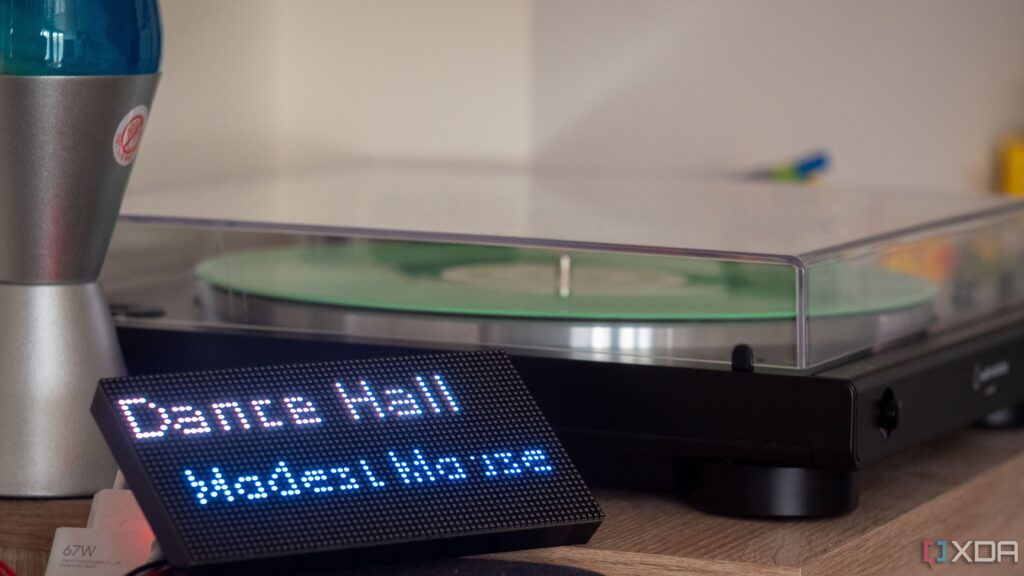
BREAKING: A tech enthusiast has unveiled a revolutionary $30 display that transforms vinyl record listening experiences. This innovative device, built with an ESP32 microcontroller and a Waveshare 64×32 panel, identifies and displays the currently playing track in real-time, marking a significant leap for vinyl lovers.
The display uses a unique setup to capture audio from a record player, leveraging a microphone placed on the speaker. This audio is then sent to the Shazam music identification service through a custom MQTT server. The result? An easy-to-read screen that informs everyone in the room about which track is playing—without needing to ask.
JUST ANNOUNCED: This groundbreaking project showcases a blend of hardware ingenuity and software prowess. Using a reverse-engineered version of Shazam’s API called Shazamio, the device processes the audio data and reports the track information every 10 seconds. While privacy concerns were considered, the microphone’s placement ensures minimal background noise interference.
The creator notes, “It’s an easy way for anyone in my home to see what song is currently playing on my record player.” This development is particularly exciting for the vinyl community, combining traditional media with modern technology.
Moreover, the device’s flexibility allows for dynamic color adjustments based on the album cover art retrieved from Shazam’s API. The creator emphasizes that while the current polling method is effective, they are exploring options to refine accuracy, such as syncing polling times with the length of the song being played.
Notably, early testing revealed challenges with Shazam’s music identification accuracy, leading to potential false reads. However, the creator has plans to implement a manual override button to address misidentified tracks, ensuring users can verify songs on demand.
The project utilizes the ESP32’s Direct Memory Access (DMA) capabilities for seamless interaction with the Waveshare display. The creator opted for the ESPHome framework, which simplifies the integration process with MQTT, making it accessible even for those less experienced in coding.
Once the device is set up and flashed with the necessary code, guests can enjoy a unique visual representation of their vinyl experience, bridging the gap between digital convenience and the nostalgic appeal of vinyl records.
IMPACT: This innovative display not only enhances the vinyl listening experience but also serves as a testament to the growing trend of DIY tech projects that merge old and new technologies. As this project gains traction, it could inspire others to explore similar integrations, enriching home audio experiences across the globe.
As vinyl records make a resurgence, tools like this display remind us of the marriage between analog charm and digital innovation. The creator encourages others to explore the project further on GitHub, where the code and setup instructions are available.
Stay tuned for more updates on this developing story as new features and enhancements are unveiled in the coming weeks.





